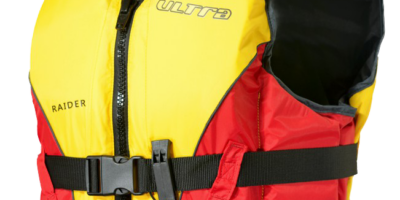Minimizing the Risk of Swamping a Boat
Minimizing the Risk of Swamping a Boat
Boating can be an enjoyable activity. However, it involves certain risks. One of the major risks to consider is swamping. Swamping occurs when water breaches the boat and leads to potential capsizing. Understanding how to minimize this risk is crucial for the safety of everyone on board.
Understanding Swamping
Swamping is often caused by excess water flow leading to an imbalance. This can happen due to waves, heavy rain, or improper weight distribution. The first step to prevention is understanding what may cause this issue. Different boats have disparate levels of vulnerability to swamping based on their size, type, and design. Small boats, for instance, are more susceptible to swamping compared to larger vessels due to their limited capacity to handle waves and overloads.
Equipment Check and Maintenance
Before setting out to sea, ensure your boat is in top condition. Routine maintenance involves checking the hull for cracks or weaknesses. A damaged hull increases the likelihood of taking on water. Make sure the motor is functioning properly and fuelled adequately. Ensure pumps are operational to handle any water taken onboard. Adequate and functioning safety equipment like life vests should be onboard and accessible to all passengers.
Investing in proper equipment also contributes to safety. Have a reliable bilge pump installed. It aids in removing water that finds its way into the boat. Additionally, confirm that navigation equipment is functioning. It will help avoid potential hazards on the water.
Weight Distribution
Uneven weight distribution is a common swamping cause. Avoid piling excessive weight on one side of the boat. It destabilizes the vessel increasing swamping risk. Spread the weight evenly and secure all loose items. Pay attention to how passengers are seated. Shift them around if the boat leans to one side.
Weather Conditions
Check weather conditions before departure. Bad weather significantly increases swamping risk. Strong winds and rough waves are particularly dangerous. Cancel a trip if there’s a forecast of inclement weather. If unexpected weather arises, head back to shore immediately. It’s better to postpone and stay safe than to risk stormy waters.
Training and Preparedness
Training is indispensable for minimizing risks. Every boater should take a boating safety course. Learn about boat handling, emergency repairs, and rescue techniques. Knowledge equips you to address unexpected situations effectively. Educate passengers about safety and emergency procedures. Ensure everyone knows how to properly wear life jackets and what to do if the boat starts taking on water.
Loading Practices
Mind your loading practices. Overloading the boat is a straightforward path to swamping. Know the boat’s weight capacity and abide by it. Besides payload weight, consider the weight of the passengers, fuel, and any additional equipment. Register your boat’s load limits in case you upgrade or replace equipment.
Navigation
Familiarize with the boating route. Some areas pose greater risks than others. Shallow waters can cause sudden stops leading to swamping. Watch for submerged objects or low visibility areas. Maintain a safe speed and be prepared to redirect if necessary.
Emergency Protocols
Have clear emergency protocols in place. Equip the boat with communication devices like radios. In case of swamping, immediately alert authorities. Know how to use distress signals. In case of severe swamping, use throwable flotation devices to ensure passenger safety while waiting for help.
Proper Mooring
When docking or at anchor, moor properly. Improper mooring can dislodge the boat leading to swamping. Use sturdy ropes and ensure they are secured tightly. Monitor the boat’s position against tides or current changes periodically.
Checklist for Swamping Prevention
- Conduct thorough equipment checks before departure.
- Ensure even weight distribution across the boat.
- Stay updated on weather forecasts.
- Adhere to safe loading practices while acknowledging the weight capacity.
- Familiarize with water routes and navigational hazards.
- Establish clear emergency protocols.
- Properly moor and secure the boat when not in motion.
Lifejackets and Safety Gear
Lifejackets are essential. They must be available for everyone onboard. Choose lifejackets according to size and weight. Educate passengers on fitting and wearing them. Keep additional safety gear like flares and first-aid kits accessible.
Boat Design and Modifications
The design plays a part in swamping risk. Consider modifications that improve buoyancy and stability. Install flotation foam to aid in buoyancy. Some boats allow for custom modifications to enhance water handling abilities. Consult professionals for structural changes to ensure compliance with safety standards.
Communication
Communication is crucial when it comes to risk minimization. Regularly inform passengers about the situation and any directions they need to follow. Maintain communication lines with nearby boats, marinas, and coast guards. This aids in quick response if things go awry.
Regular Drills
Conduct regular drills on emergency procedures. Familiarity with emergency operations leads to faster response in real situations. Practice the drill for distributing lifejackets, deploying flotation devices, and using communication equipment.
“`
